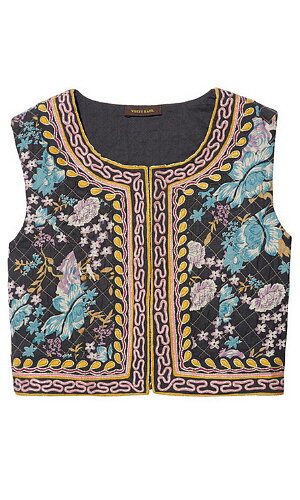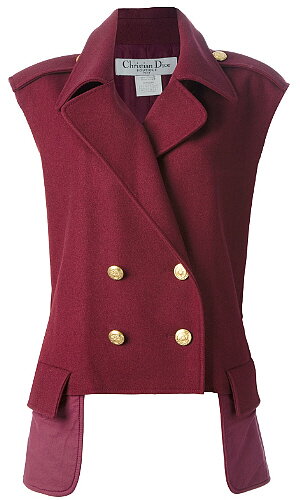Vests for Sample
No comments for this styleVests
Vests have been worn for 300 years in a style similar to the original styles worn by Persian men. For men, vests reached their greatest popularity in the eighteenth century. With twelve to twenty buttons, Silk vests were beautifully displayed under the long jackets of the period. In the Victorian era, men wore vests for the practical reason of keeping out the cold, and they looked more professional than a sweater when he removed his jacket. The vest of this period was in the same fabric as the suit.
Women adopted vests in the 1920s, and now they are a garment that regularly returns to the world of fashion. A vest can be made of almost any fabric, from canvas to gabardine, silks to knits. They can be sequinned, brocaded or painted, straight or fitted, seen with or without lapels, long or short, pointed or straight. A vest (when not too tight) can be used to hide a multitude of mid-torso figure problems and when in the same fabric as the pant or skirt, can add visible height to a short body. As the third item of clothing, they can ‘finish' an outfit by marrying two unrelated colours or simply adding a little ‘panache' to uninspiring separates.
To elongate the silhouette and slim the bottom, whenever possible, choose a vest that has a back that blends in colour with your ‘bottom' garment; this will avoid a strong horizontal line. Straight vests are best worn open when the desire is to slim the hips, waist, bust or stomach. Diagonal vests (those with pointed fronts) are wonderful for visually elongating and slimming the torso. For women who have a large bust, vests can be kept in place by using double-sided tape, e.g., ‘Res-Q' or ‘Hollywood' tape (placed just inside the vest opening and secured to the blouse). Curved or fitted vests are best left closed to retain their intended line and stop them from curving outward and adding weight to the hips.
Your best vest lengths will be the same as your jacket, top and overblouse guidelines.






